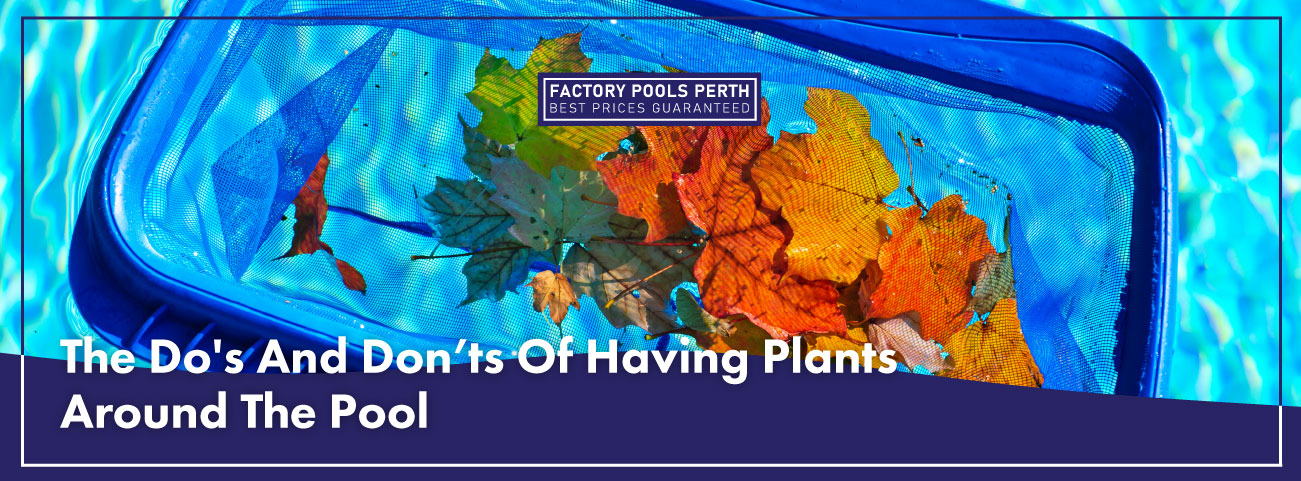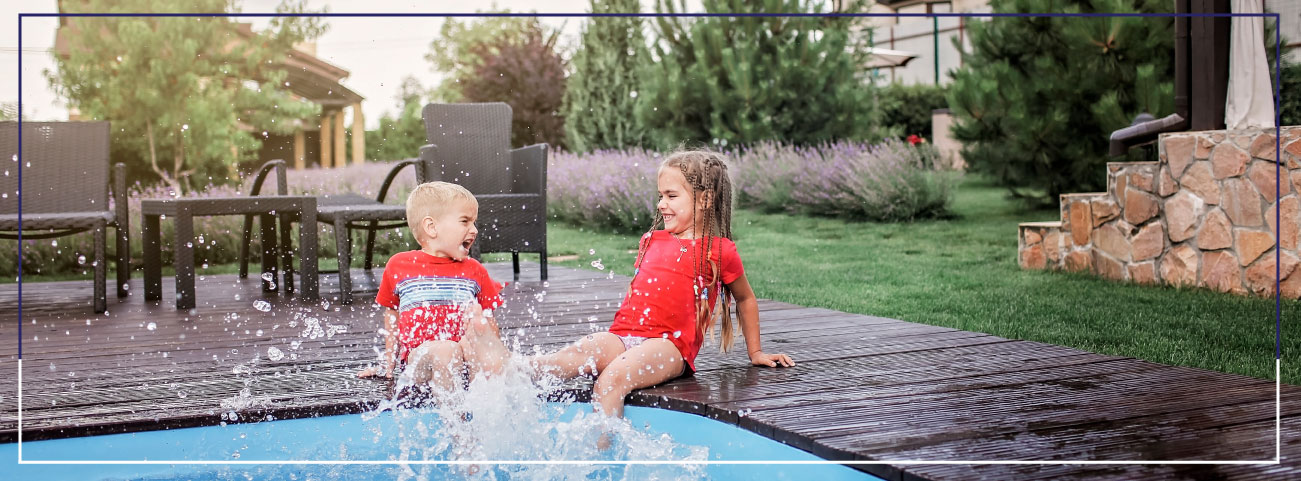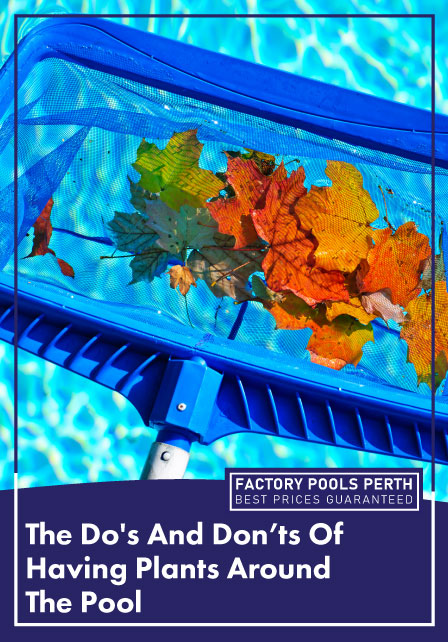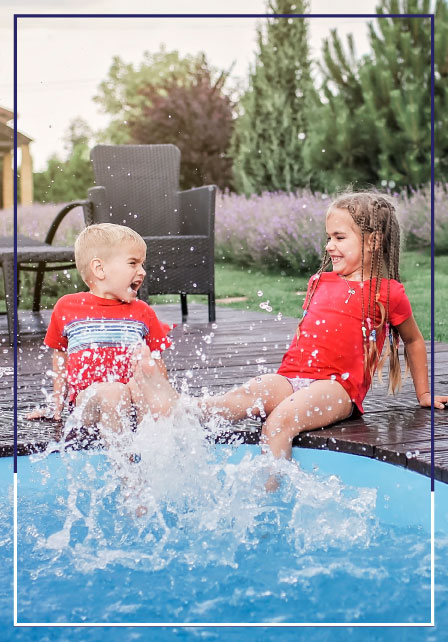The Do's And Don’ts Of Having Plants Around The Pool
Having lush, vibrant plants strategically placed around the pool area can truly transform your outdoor space into a serene and tranquil oasis. The sight of beautiful foliage and the fragrance of blooming flowers can create a soothing atmosphere, inviting you to unwind and relax. However, creating the perfect poolside landscape is not as simple as randomly picking your favourite plants and placing them around the pool. There are several important factors to consider to ensure the best results. Factors such as the climate, sunlight exposure, and soil conditions play a crucial role in determining the success of your poolside garden.

Furthermore, it's crucial to strike a balance between aesthetics and practicality. Opting for plants that are not only visually appealing but also low-maintenance can save you time and effort in the long run. By adhering to these dos and don'ts, you can create a beautifully harmonious and practical poolside landscape that will be a delight for both your eyes and your senses. So, take the time to carefully plan and select the perfect plants, and let nature's beauty enhance your poolside experience.
Do's
Choose Salt Tolerant Plants
If you have a saltwater pool, consider salt-tolerant plants. Salt can cause damage to plants, including leaf burn, reduced growth, and in severe cases, death. Consider varieties like palms, agave, and succulents that are known for their resilience to salty conditions.
Opt for Non-deciduous Plants
To prevent excessive cleaning, non-deciduous or evergreen plants are ideal around pools. These plants retain their leaves year-round, minimising the amount of debris that could end up in the pool. Species like hibiscus, birds of paradise, and yucca are excellent choices.
Select Plants with Non-Invasive Roots
Plant roots can damage the pool structure and surrounding patio. Stick with plants that have non-invasive root systems. Lavender, golden cane palm, and olive trees are all safe bets.
Use Container Plants
Container plants offer incredible versatility and convenience, as they can be easily moved and rearranged to suit your ever-changing needs. Whether you opt for smaller flowering plants to create a vibrant burst of colour or larger shrubs to add a touch of grandeur, these potted beauties will effortlessly bring life and vitality to your poolside oasis.
Consider Native Plants
Native plants are well-adapted to local conditions, and they often require less maintenance than exotics. They can help attract wildlife, including birds, butterflies, and bees to your poolside. Try species like salvia or verbena for a splash of colour.

Plant Strategically
Plants can be used to create privacy, provide shade, and block out noise pollution. Think about where you want to place each plant based on what it will contribute to the area. For instance, a hedge of evergreen trees can create a private retreat while blocking an unsightly view. Plant strategically for maximum impact.
Don'ts
Avoid Thorny or Spiky Plants
Plants with sharp thorns or spikes can cause painful injuries, particularly in areas where people frequently walk barefoot, such as around swimming pools. It is advisable to maintain a safe distance from plants such as roses or cacti, which possess these characteristics, to ensure a pleasant and injury-free environment for everyone.
Don’t Use Plants That Attract Bees
When it comes to swimming, it’s important to be mindful of bees. To minimise the chances of encountering them, it’s best to steer clear of flowering plants that attract bees. Instead, consider opting for bee-resistant plants like vibrant geraniums or beautiful marigolds. By making this small adjustment, you can enjoy your time in the water without any unwanted buzzing distractions.
Steer Clear of Messy Plants
To keep your pool clean and pristine, it’s best to steer clear of plants that shed leaves, needles, fruits, or seeds that could contribute to dirt and debris. For instance, although visually stunning, the Jacaranda tree is notorious for its abundant droppings, which can accumulate and require frequent maintenance. By being mindful of such plants, you can ensure a hassle-free pool experience and spend more time enjoying the crystal-clear water.
Avoid Fast-Growing Plants
Fast-growing plants require more maintenance and can quickly become a nuisance. Stick with slower-growing, lower-maintenance plants like dwarf bamboo or shrubs. Remember, while these tips can guide your plant choices, personal style and preference are also important. With careful selection and proper maintenance, plants can greatly enhance the aesthetic and enjoyment of your pool area. Whether it’s the rustling of palm leaves in the breeze, the vibrant splash of blooming flowers, or the shade provided by a well-placed tree, the right plants can bring your poolside to life in ways that nothing else can.

Avoid Plants with Toxic Leaves or Fruits
Keep away from plants that have toxic leaves or fruits, as it can be dangerous if they end up in the pool. Examples include yew, nightshade, and oleander – all of which are poisonous to humans and animals.
Don’t Overcrowd the Pool Area
While plants can add aesthetic value to your pool area, too many can cause overcrowding and interfere with proper maintenance. Be sure to plan ahead and leave enough space for easy access around the pool. Plant thoughtfully and sparingly so you can enjoy your landscaping without compromising the functionality of your pool.
By following these simple tips you can create a beautiful, inviting atmosphere around your pool. A well-designed poolside garden can increase the value of your home and provide years of enjoyment for you and your family.
Conclusion
curating a stunning and functional poolside landscape is an art that combines knowledge of plant characteristics, understanding of local conditions, and a keen eye for aesthetics. Careful consideration of the do’s and don’ts can help you achieve an outdoor space that not only complements the beauty of your pool but also enriches your overall experience. With a little creativity, you can create a harmonious and serene poolscape that offers all the beauty of nature without any of its drawbacks.
Now that you’re armed with these valuable tips, why not take the next step in transforming your poolside into a paradise? Reach out to Factory Pools Perth today, and let’s turn that vision into a breathtaking reality. Your dream poolside sanctuary is just a phone call away!
The Do's And Don’ts Of Having Plants Around The Pool
Having lush, vibrant plants strategically placed around the pool area can truly transform your outdoor space into a serene and tranquil oasis. The sight of beautiful foliage and the fragrance of blooming flowers can create a soothing atmosphere, inviting you to unwind and relax. However, creating the perfect poolside landscape is not as simple as randomly picking your favourite plants and placing them around the pool. There are several important factors to consider to ensure the best results. Factors such as the climate, sunlight exposure, and soil conditions play a crucial role in determining the success of your poolside garden.

Furthermore, it's crucial to strike a balance between aesthetics and practicality. Opting for plants that are not only visually appealing but also low-maintenance can save you time and effort in the long run. By adhering to these dos and don'ts, you can create a beautifully harmonious and practical poolside landscape that will be a delight for both your eyes and your senses. So, take the time to carefully plan and select the perfect plants, and let nature's beauty enhance your poolside experience.
Do's
Choose Salt Tolerant Plants
If you have a saltwater pool, consider salt-tolerant plants. Salt can cause damage to plants, including leaf burn, reduced growth, and in severe cases, death. Consider varieties like palms, agave, and succulents that are known for their resilience to salty conditions.
Opt for Non-deciduous Plants
To prevent excessive cleaning, non-deciduous or evergreen plants are ideal around pools. These plants retain their leaves year-round, minimising the amount of debris that could end up in the pool. Species like hibiscus, birds of paradise, and yucca are excellent choices.
Select Plants with Non-Invasive Roots
Plant roots can damage the pool structure and surrounding patio. Stick with plants that have non-invasive root systems. Lavender, golden cane palm, and olive trees are all safe bets.
Use Container Plants
Container plants offer incredible versatility and convenience, as they can be easily moved and rearranged to suit your ever-changing needs. Whether you opt for smaller flowering plants to create a vibrant burst of colour or larger shrubs to add a touch of grandeur, these potted beauties will effortlessly bring life and vitality to your poolside oasis.
Consider Native Plants
Native plants are well-adapted to local conditions, and they often require less maintenance than exotics. They can help attract wildlife, including birds, butterflies, and bees to your poolside. Try species like salvia or verbena for a splash of colour.

Plant Strategically
Plants can be used to create privacy, provide shade, and block out noise pollution. Think about where you want to place each plant based on what it will contribute to the area. For instance, a hedge of evergreen trees can create a private retreat while blocking an unsightly view. Plant strategically for maximum impact.
Don'ts
Avoid Thorny or Spiky Plants
Plants with sharp thorns or spikes can cause painful injuries, particularly in areas where people frequently walk barefoot, such as around swimming pools. It is advisable to maintain a safe distance from plants such as roses or cacti, which possess these characteristics, to ensure a pleasant and injury-free environment for everyone.
Don’t Use Plants That Attract Bees
When it comes to swimming, it’s important to be mindful of bees. To minimise the chances of encountering them, it’s best to steer clear of flowering plants that attract bees. Instead, consider opting for bee-resistant plants like vibrant geraniums or beautiful marigolds. By making this small adjustment, you can enjoy your time in the water without any unwanted buzzing distractions.
Steer Clear of Messy Plants
To keep your pool clean and pristine, it’s best to steer clear of plants that shed leaves, needles, fruits, or seeds that could contribute to dirt and debris. For instance, although visually stunning, the Jacaranda tree is notorious for its abundant droppings, which can accumulate and require frequent maintenance. By being mindful of such plants, you can ensure a hassle-free pool experience and spend more time enjoying the crystal-clear water.
Avoid Fast-Growing Plants
Fast-growing plants require more maintenance and can quickly become a nuisance. Stick with slower-growing, lower-maintenance plants like dwarf bamboo or shrubs. Remember, while these tips can guide your plant choices, personal style and preference are also important. With careful selection and proper maintenance, plants can greatly enhance the aesthetic and enjoyment of your pool area. Whether it’s the rustling of palm leaves in the breeze, the vibrant splash of blooming flowers, or the shade provided by a well-placed tree, the right plants can bring your poolside to life in ways that nothing else can.

Avoid Plants with Toxic Leaves or Fruits
Keep away from plants that have toxic leaves or fruits, as it can be dangerous if they end up in the pool. Examples include yew, nightshade, and oleander – all of which are poisonous to humans and animals.
Don’t Overcrowd the Pool Area
While plants can add aesthetic value to your pool area, too many can cause overcrowding and interfere with proper maintenance. Be sure to plan ahead and leave enough space for easy access around the pool. Plant thoughtfully and sparingly so you can enjoy your landscaping without compromising the functionality of your pool.
By following these simple tips you can create a beautiful, inviting atmosphere around your pool. A well-designed poolside garden can increase the value of your home and provide years of enjoyment for you and your family.
Conclusion
curating a stunning and functional poolside landscape is an art that combines knowledge of plant characteristics, understanding of local conditions, and a keen eye for aesthetics. Careful consideration of the do’s and don’ts can help you achieve an outdoor space that not only complements the beauty of your pool but also enriches your overall experience. With a little creativity, you can create a harmonious and serene poolscape that offers all the beauty of nature without any of its drawbacks.
Now that you’re armed with these valuable tips, why not take the next step in transforming your poolside into a paradise? Reach out to Factory Pools Perth today, and let’s turn that vision into a breathtaking reality. Your dream poolside sanctuary is just a phone call away!



